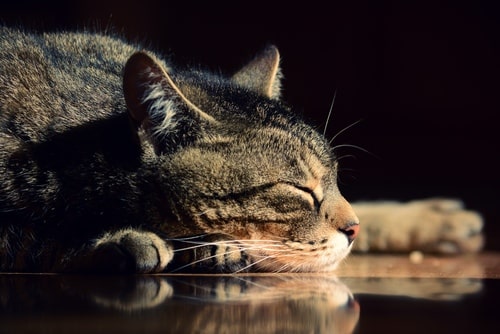Diabetes mellitus or sugar diabetes is a complex and common illness. Cat diabetes is affecting the feline in an alarming number. This illness is incapable of generating insulin towards balancing glucose or blood sugar levels. If it not treated right away, it results in weight loss, vomiting, loss of appetite, severe depression, dehydration, as well as functional complications, and it results in coma and death. The illness affects one in 400 cats. Signs of diabetes mellitus in a cat are identical to humans. The occurrence rate of this disease is less than dogs.
Symptoms : The signs of feline diabetes are
- Increased urination
- Intensified appetite or least appetite
- Too much thirst (this is the first sign of feline diabetes)
- Commencement of the illness within a couple of weeks
- Weaker back legs
- Peripheral neuropathy
- Sugar in the urine, showing by glucose strip or keto, ketones in the urine showing an emergency by strip
- Apparent fragility
- Thickening skin
- Acute signs of lethargy
- Limpness
- Acetone-smelling breath
Diet
The diet of a cat experiencing diabetes can be based on two assumptions. It’s a high protein together with a low carbohydrate diet, or it can be a diet of high carbohydrate, low fat with high fiber.
These diets are intended to lower weight and to control the level of blood sugar. The responsiveness of every cat is to be different based on the use of diet plan.
Fats and protein replace the low carb diet. If the cars suffer from liver, kidney or bowel diseases, the high-protein diet wouldn’t be appropriate. Considering the health condition of cats, you pick the diet. The canned foods for a cat, Purina DM can be in this category.
It can be high-carb, high-fiber. The extra soluble fiber, psyllium lessens the intensification of conversion rates for starch to sugar, and it helps the control of sugar level. Not for gaining weight, it’s for losing weight. The foods in these classifications are Hill’s W/D, Hills R/D as well as Purina OM. Know the best diet. You check the symptoms of high blood sugar, too much thirst or urination, and verify ketones with strips.
Feline Diabetes Treatment
80 to 95% of feline diabetes affected cats are the same as type II diabetes. Signs are diagnosed. Research shows these felines are severely dependent on insulin. The prompt, effective treatment can maybe cure cats of type II diabetes.
On the other hand, it increases the weakness of the legs, ketoacidosis, malnutrition, dehydration as well as the death of the cats. The treatment has insulin injection once to 2 times a day, diet as well as oral medication.
Initially, the vet is to check and recheck the signs and ready the treatment schedule. The veterinarian is to choose the dose of insulin. Too much insulin can cause the death of cats.
In general, the basic treatment in feline diabetes takes account of the following:
- Insulin therapy
- Oral medication in place of insulin
- Test of blood as well as urine examination
- Behavioral signals establishing insulin therapy
- Physical examinations
